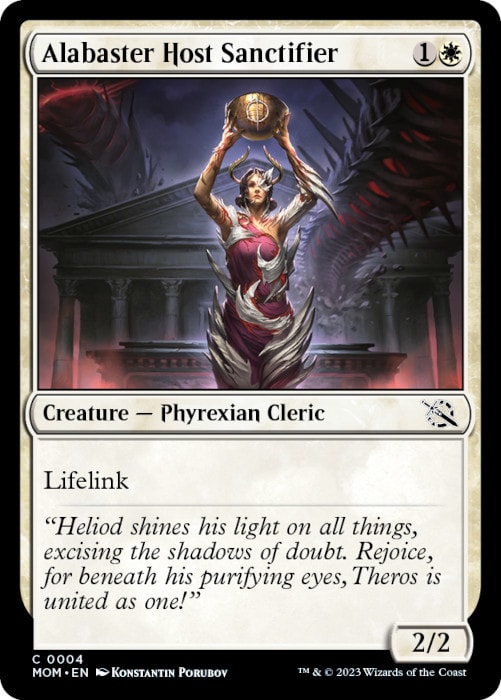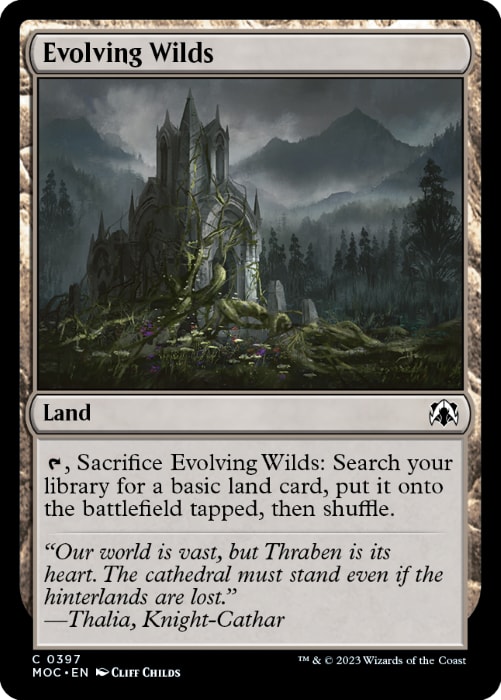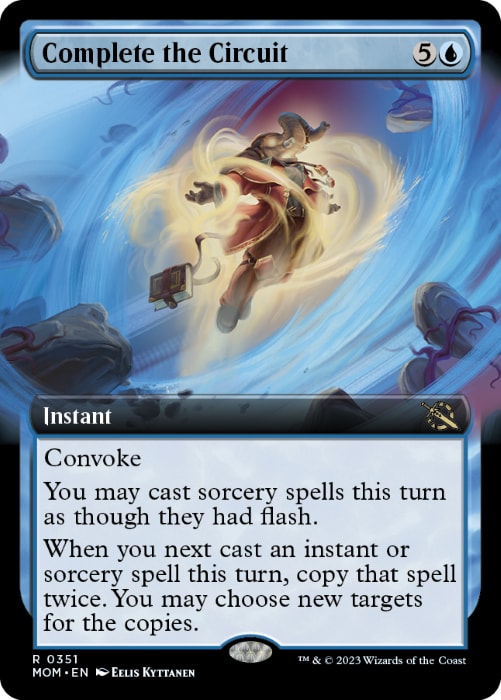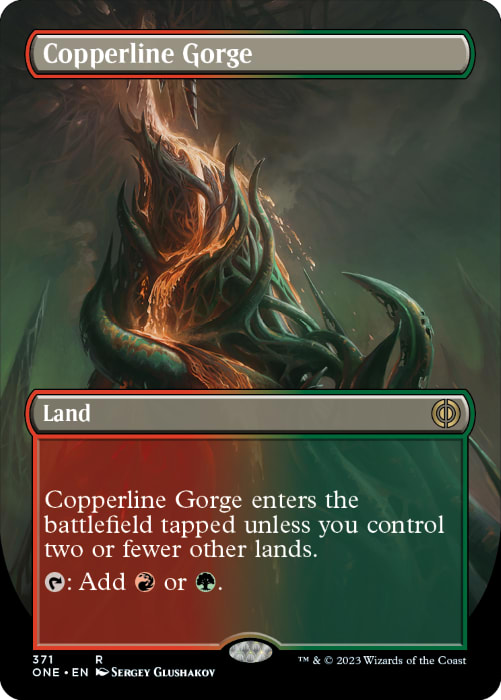It's prerelease weekend for March of the Machine, and whether you're playing at your local game store, at a bigger event like CommandFest, or online on Magic Online or MTG Arena, that means it's likely time to play some Sealed Deck!
Sealed Deck is perhaps one of the most simple and accessible formats in Magic: The Gathering, which is why it is used at pre-releases and entry level events. Because of this, it often has a somewhat unwarranted reputation for being a luck-based format, as you are at the mercy of whatever cards you open. While it is true that you have more direct control of your final deck in a Booster Draft than in Sealed Deck as far as selecting your cards, there's still a ton of strategy and agency in Sealed Deck that gives more prepared and experienced players an edge.
Today I am going to go over the basics of how to build a great Sealed deck, as well as some more advanced tactics for maximizing your card pool and building the best deck you can. So, let's go!
The Basic Basics
At its core, Sealed Deck is just another Limited format. You will be opening (usually) six packs of the current set, and then building the best deck possible from that pool of cards. This means you'll usually only have around 6ish rares (perhaps more based on foils or extra stuff in certain sets) and about 90 total cards. As such, you are only going to use a small portion of this pool to build a 40-card deck.
Like Draft, your goal is to build the smallest deck possible which is 40 cards, so you're only playing your best cards, with about 17 lands and a good assortment of creatures and threats. Playing six creatures and a dozen pump spells is just as bad as only playing only 10 lands. These baseline heuristics are simple but important; you'll need a good reason to stray from them.
However, while it's not that hard to pick 23 White and Green cards and add 9 Forests and 8 Plains and call it a deck, optimizing your card pool is far more challenging - And also rewarding! Sealed is a challenging format and there are many edges to be gained with careful and thoughtful management of your card pool.
Differences From Draft
However, before we get to the card pool itself, it is important to help define the differences between Sealed Deck and Draft.
In Draft, you are specifically selecting cards from a fairly large pool to construct a certain kind of deck with purpose. This means most of your cards will all be similarly themed, which makes putting together a "deck" rather than just "a collection of cards" a major goal for most Draft decks. As such, Draft decks are often more than the sum of their parts, utilizing cards that may be weak in a vacuum but excellent when used in the proper way.
Using the last format, Phyrexia: All Will Be One, as an example, cards like Pestilent Syphoner or Eye of Malcator are bad in most decks, but if you are a dedicated toxic or artifact deck they are quite excellent cards that you can pick up later in the Draft because most players won't want them. In Draft this allows you to draft around Eye of Malcator by just taking every artifact you see and creating a level of redundancy, but in Sealed that same Eye of Malcator is almost assuredly not going to make the cut as it just won't have the proper support.
Which brings us to the key distinction and how you need to look at building your Sealed decks:
Because it is much harder to assemble synergy in Sealed Deck than Draft, raw power and rate is much more important than trying to do something cute. The games will also go a little longer than your average Draft games, which also gives your powerful cards more time to shine.
So how do we be sure we win the arms race?
Maximizing Power Level
At its heart, the most important factor that goes into your Sealed deck is going to be your card pool. While you can work with both good pools and bad pools, it all starts with the cards you open.
You can't control what cards you will open, but you can control what you will do with them!
Your number one goal when building your Sealed deck is to squeeze as much power as you possibly can out of it. You are not going to be play every card, but you want to find a way to play as much of your power as you can. An easy way to conceptualize this is to think of each card in your pool of having a point value from 0 to 10. A game changing bomb rare like Sheoldred // The True Scriptures would be a 10, a high quality removal spell like Stoke the Flames would be around an 8, while a solid common like Alabaster Host Sanctifier would be around a 6.
Your job is to build a deck that uses the highest amount of power points possible, while maintaining a reasonable mana base of two colors with maybe a splash or two if the mana fixing permits it. You may have 15 playable White cards, but if they're all 6's you're going to have trouble breaking through; You may be better served playing a few 4's and 5's to get those two bomb 9's or 10's into your deck.
This also means that what mana-fixing you open is going to be very important and have a big hand in dictating what you are able to play. While you may force an awkward splash for a 10, if your fixing is good enough you may slide in an off color 7 and 8 to replace an on color 5 and 6 to get more power in that way.
Handling A Bad Pool
Opening bomb rares is great, but what do you do when you open your pool and see a bunch of garbage rares?
We've all been there, but it's important to remember that you're playing Sealed Deck, not the lottery. Just because you didn't open any bomb rares doesn't mean that you are doomed in your event, it just means you're going to need to work a little harder and be a little scrappier. While, ideally, you'd like to maximize your power level and play all your best cards, if the power level isn't there you may be better served to just build your deck more like an underpowered Draft deck. While you don't really want to be low-curve Green and White common creatures and pump spells, you need to find the combination that will give you the best chance to win in the face of what your opponent is bringing to the table. It also could mean maybe splashing that bomb rare even though your mana base doesn't support it, and just trying to get a bit lucky with your mana.
Your goal is to give yourself the best chance to win, and sometimes weaker pools dictate that you need to take risks beyond what you'd normally want to do and find the path that gives you the best chance at victory.
Advanced Sideboarding
What's that, you want more?
Well, if you want to really play Sealed Deck at a high level, the most important factor is properly using your entire card pool in every match. Very often at high level Sealed events I've built two decks out of my card pool and swapped between them for Game 2 and three as needed. Don't just think of your sideboard as a Plummet and a Disenchant you may bring in, think about the decks you are able to build as a whole strategically.
This often happens when you play against an opponent whose deck lines up particularly well against yours. For example, say you've built a grindy slow Golgari deck with lots of late game recursion, but mostly built around commons and uncommons. However, Game 1 your opponent beats you in a long game because they have two really high-quality rares that are late game bombs. Because your deck wants to go long and you're likely going to lose the late came due to card quality issues, it would be a perfect time to sideboard into your cheap and fast Boros Aggro deck to try to take them out before they find those rares and get set up, even if you think the Boros deck is worse in a vacuum than your main deck.
This requires some preparation and planning, as you usually can't just build a new deck on the spot in the three minutes you have to sideboard. Instead, you should have your second deck built and sleeved in your deck box, ready to swap a few cards from your maindeck if needed. The cleaner you are with this the more you can take your opponent by surprise, who may have even sideboarded against your main deck.
The time to work out a second deck and sideboard plans is in deck-building or in the time you have between rounds, but this is by far the biggest level up moment if you are interested in improving your record at large or high-level Sealed deck events. I do this at almost every serious Sealed event that I play and you can gain a large amount of percentage points every round with this method.
Have Fun!
Of course, not every Sealed event (and especially not the prerelease) is a high level event, so the most important thing is to go into your Sealed event with no expectations except to have fun and try to play some good Magic. Just be aware that there is a lot of agency out there for you if you want to put in the work!




































